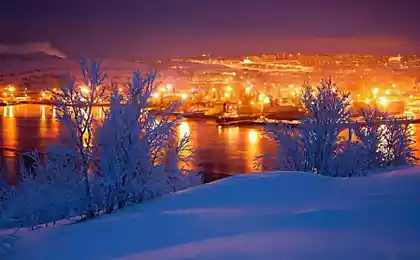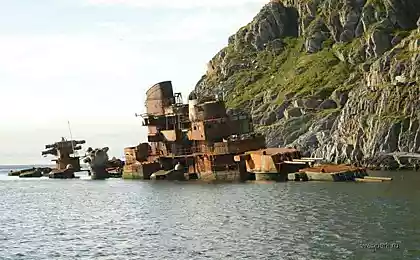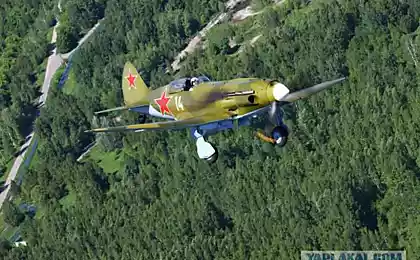790
Polar region. Severe Murmansk.
The final stage of our trip was a visit to the polar region of Murmansk - the biggest city in the world, located above the Arctic Circle. The basis of the economy of the city - Murmansk port - one of the largest ice-free ports in Russia. Once seen, our Moscow South Port seems very baby ...
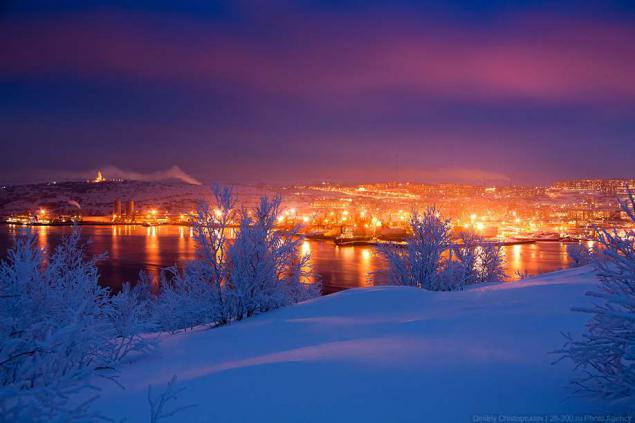
2. The first point was the shooting in the northern hill town overlooking the oil platform "Prirazlomnaya».
The town stretches more than 20 kilometers along the rocky eastern coast of the Kola Bay, and almost all of this over the coastline is a solid port.
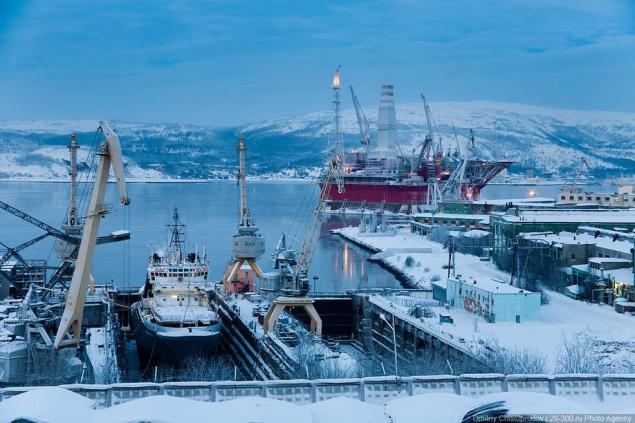
3.
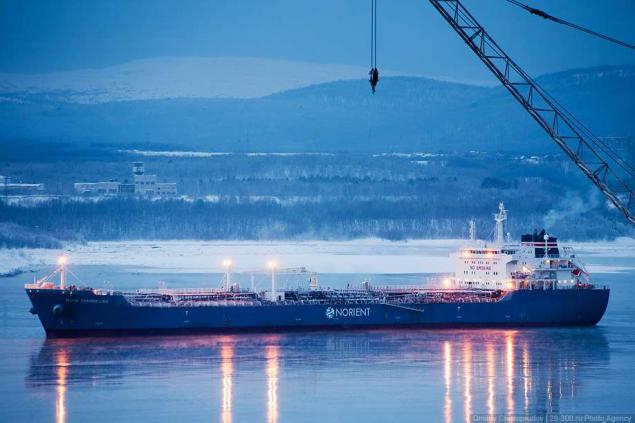
4. Fixed Offshore Platforms "Prirazlomnaya" - the world's first ice-resistant oil platform, designed to develop the Prirazlomnoye field in the Pechora Sea. The uniqueness of the platform is that it will work in Arctic conditions.
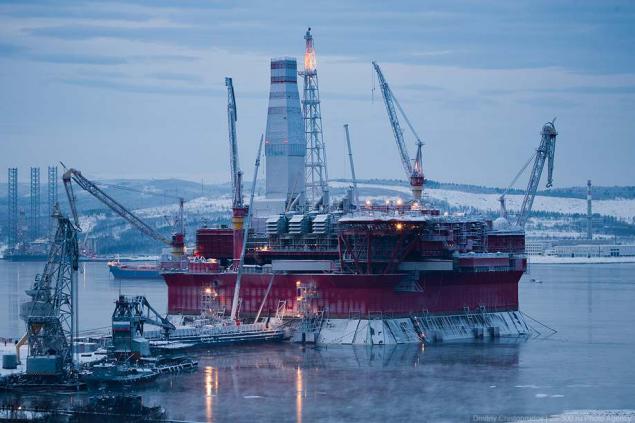
5. The total height of the platform - 141 meters, the length and width of 120 meters (the length of a football field), and weight - 110 tons.
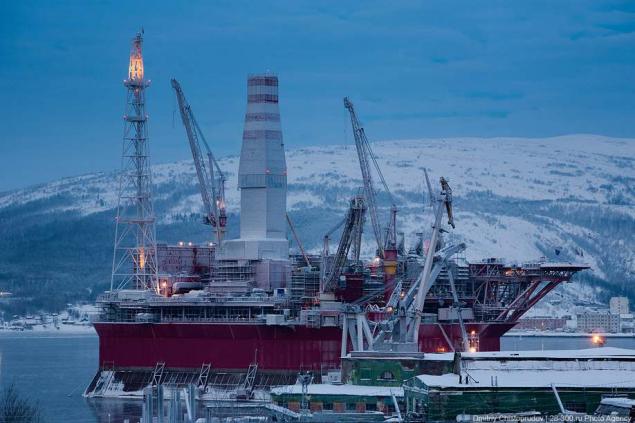
6. The scale of the design can be evaluated by little men-bug.
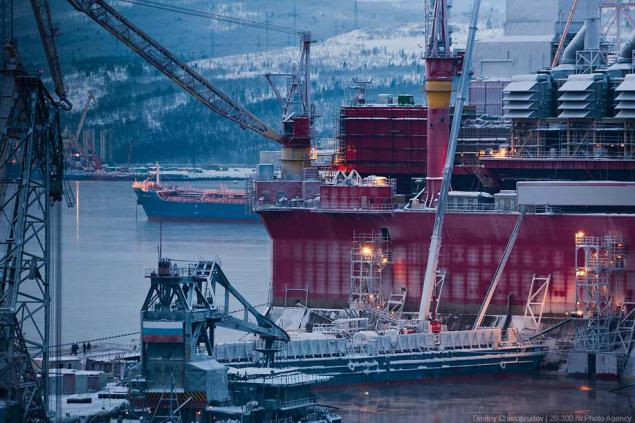
7.
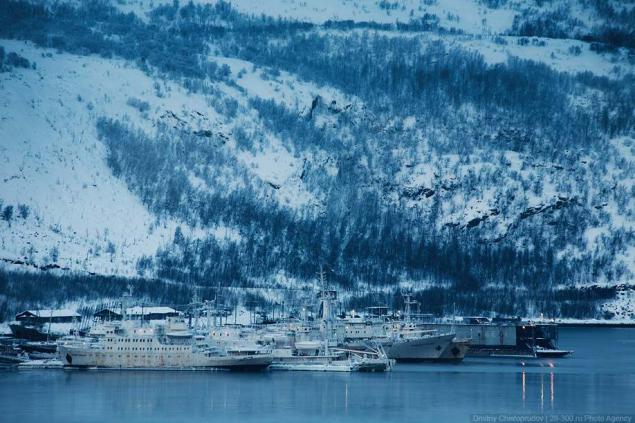
8. The heavy aircraft carrying cruiser, the only one in the Russian Navy in its class, "Admiral Kuznetsov". Prior to this cruiser called the "Soviet Union", "Riga", "Leonid Brezhnev" and "Tbilisi". Currently, the Russian ships of this class are not constructed.
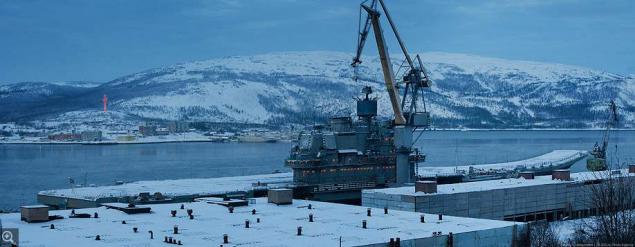
9. On 5 September 2005 in the North Atlantic on this cruiser took two emergency landing Su-33. One of the fighters fell into the ocean and sank to a depth of 1,100 meters, the second stay on deck. The cause of both accidents was broken cable arresting gear (thick steel cable that serves to force stop planes). Sunken airplane planned to destroy the depth charges due to the presence of classified equipment, but it turned out that this is not possible. Command of the Navy hoped that the plane is destroyed himself.
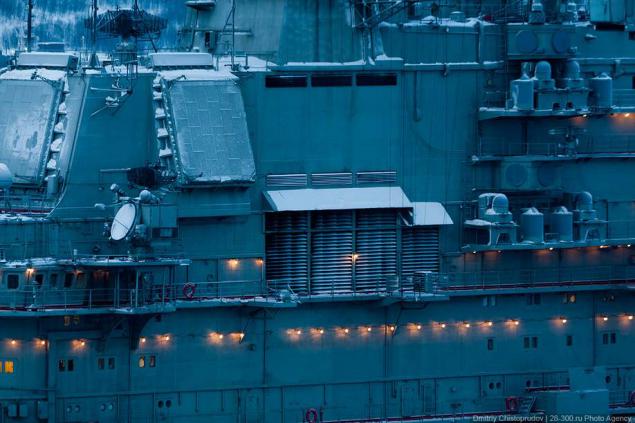
10. Next, we went to the observation deck to the "Alyosha" - memorial complex "Defenders of the Soviet Arctic during the Great Patriotic War."
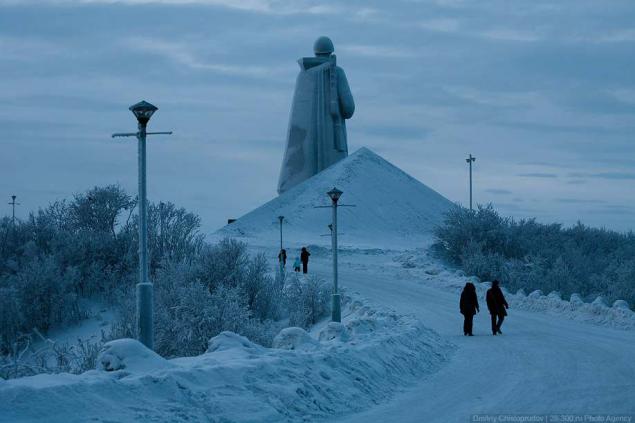
11. The complex was built on the hill Green Cape, which towers over the city and the Kola Bay on 173 meters. During the Great Patriotic War, Murmansk has repeatedly been attacked by land and air. Stationed in the Arctic 150,000th German army had Hitler's directive to capture the city and the port of Murmansk, through which were loads of allied countries for the supply of the country and the army. According to the calculations of the German command, Murmansk had to be taken in a few days.

12. Double-German troops undertook a general offensive on the Murmansk, however, both the offensive failed. After the city repulsed the offensive, the enemy attacked it from the air, dropping during the war, a total of 185,000 bombs and committing 792 flight.
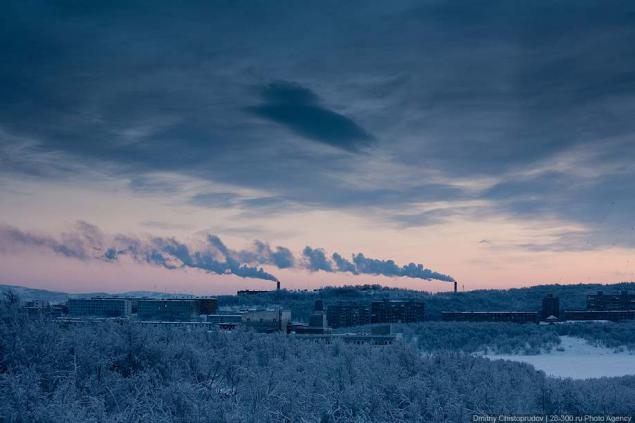
13. According to the number and density inflicted on the city by Soviet bombing Murmansk city is second only to Stalingrad. The bombing destroyed three-quarters of the buildings.
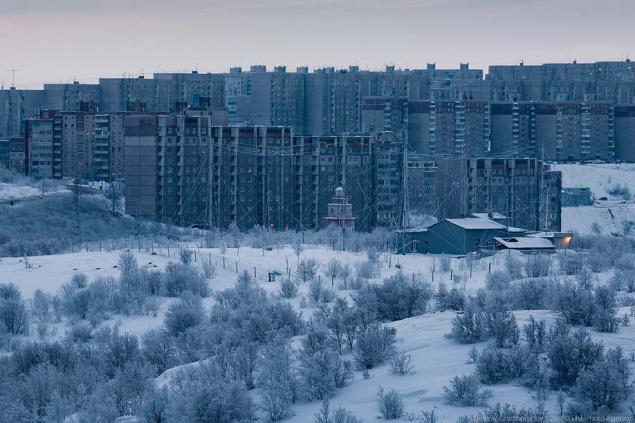
14. Since the late 1980s on the dock in the northern part of the city, in close proximity to residential areas, based fuel ship "Lepse". During the construction of nuclear-powered icebreaker "Lenin" it became clear that for the normal operation of an icebreaker escort vessel must be specially equipped for the reception of radioactive waste and reactor cooling water circuits. "Lepse" conducted 14 operations for reloading of nuclear fuel to the nuclear icebreaker "Lenin", "Arctic" and "Siberia". Emergency spent nuclear fuel from the reactor icebreakers remains in its storage until now. Total on board, dating back to 1934, kept a total of 260 kg of uranium and 156 kg of fission products and fissile radionuclide 8 kg of plutonium. Disposal of this ship will cost about 40 million euros.
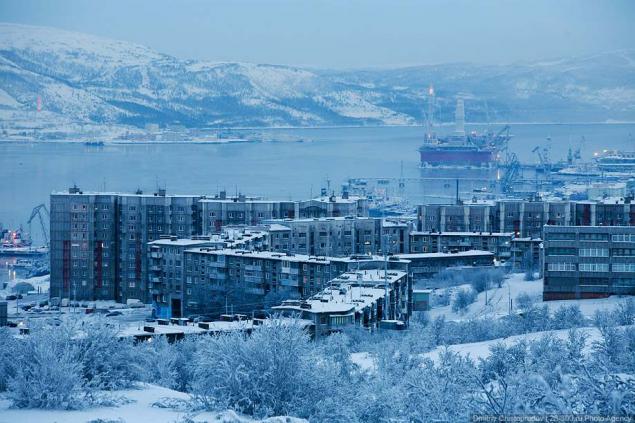
15. Murmansk port consists of three parts: the fishing port, commercial port and passenger. In recent years, the trend of displacement of all other commercial port due to increased exports of coal and other mineral resources for the reception and storage of Murmansk which has the necessary infrastructure. From constant unloading of coal, the city is gradually sinking into coal dust, and all the snow becomes gray as in the Siberian Prokopyevsk.
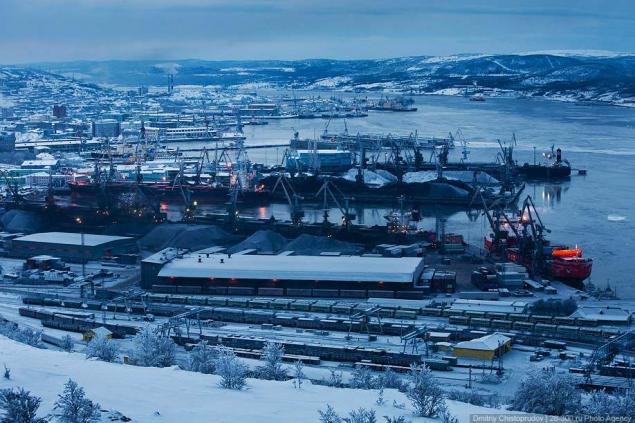
16. District Abram-cape.
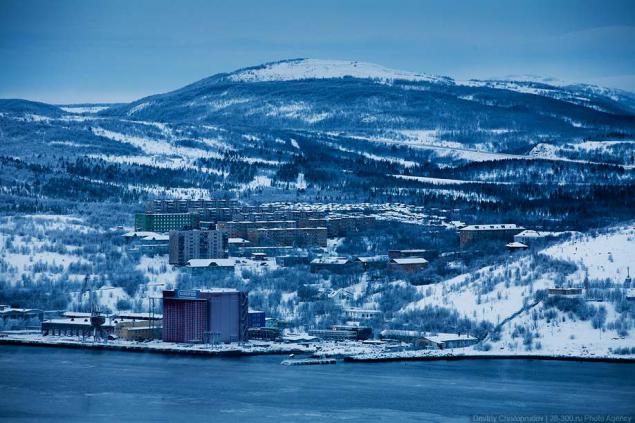
17.
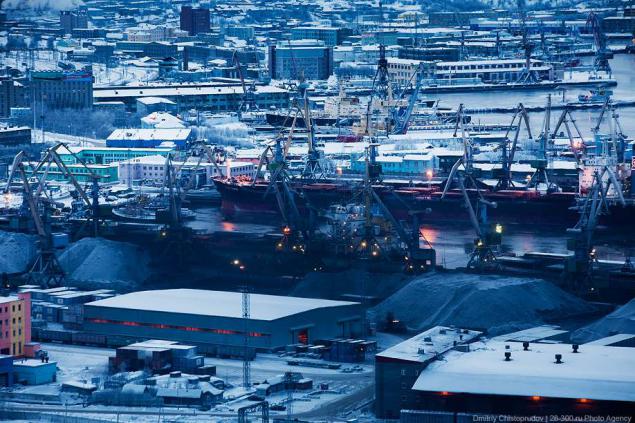
18. An important role in the city economy plays Oktyabrskaya Railway. Despite the development of road and sea transport most of the cargo transported by rail.
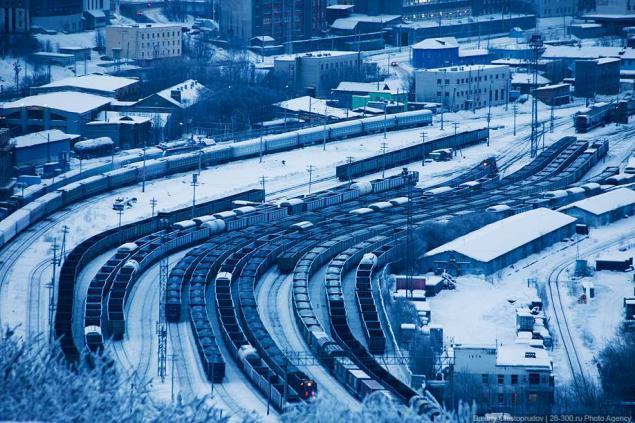
19.
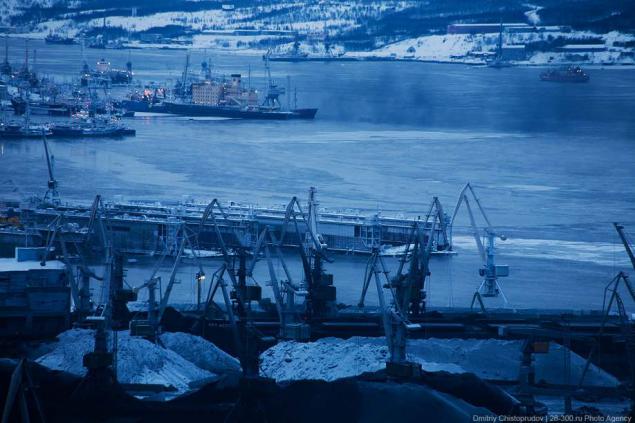
20.
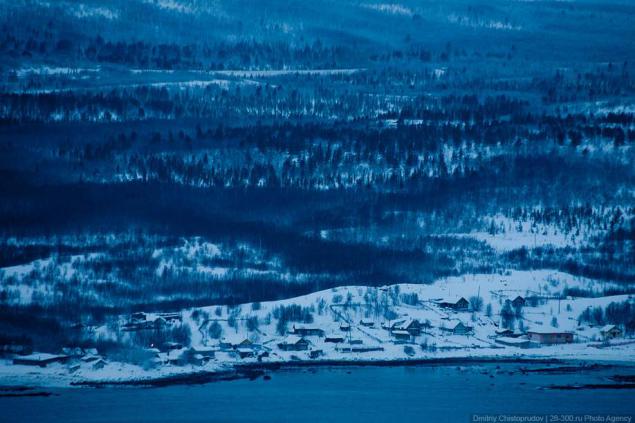
21.

22
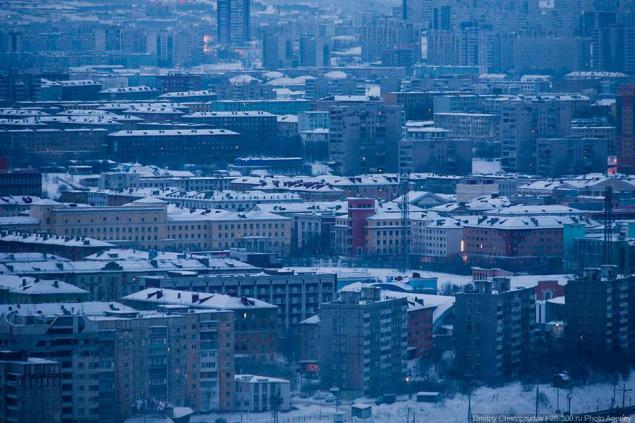
23
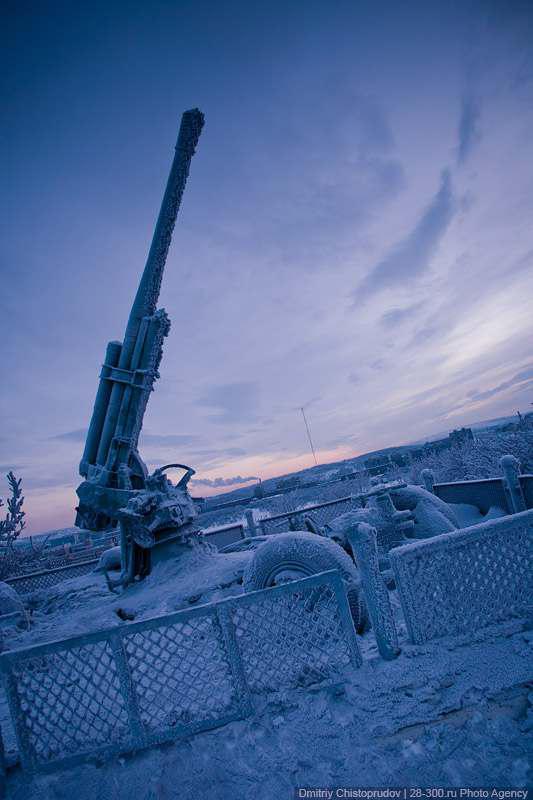
24. The view from the bridge across the Kola Bay.
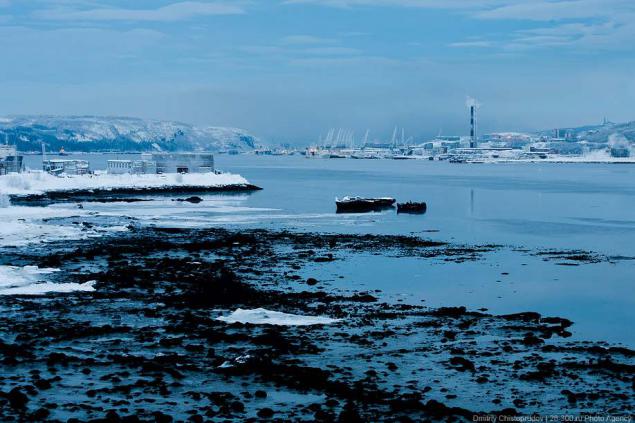
25

26.
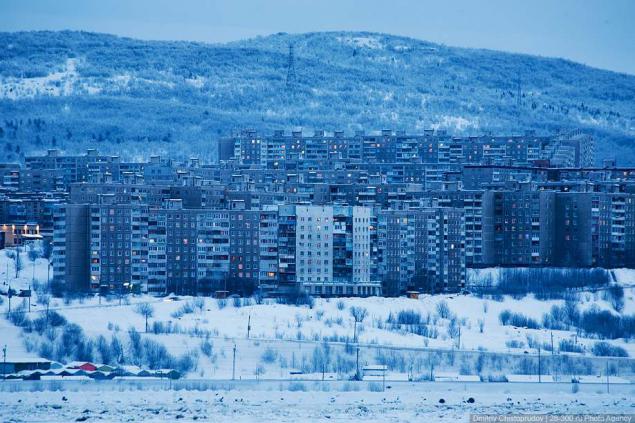
27
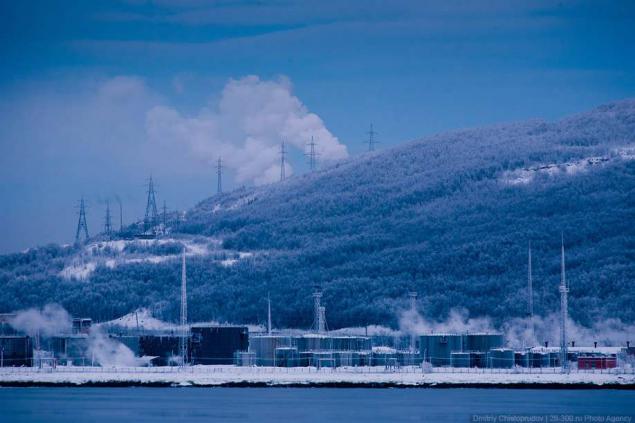
28. It is evident that in the port of unloading coal ...
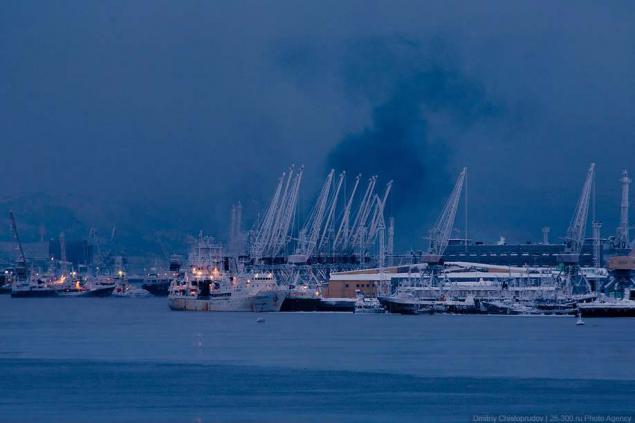
29.
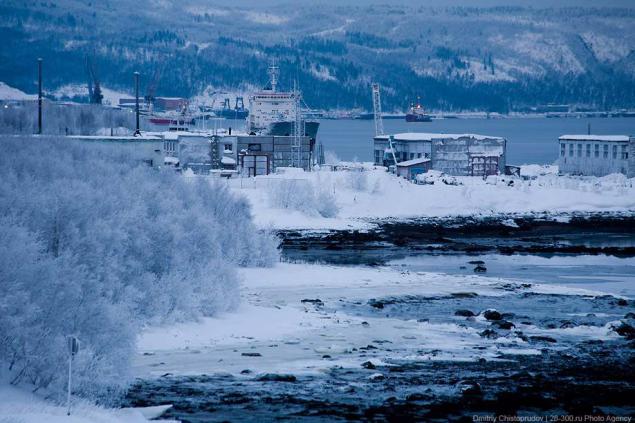
30.
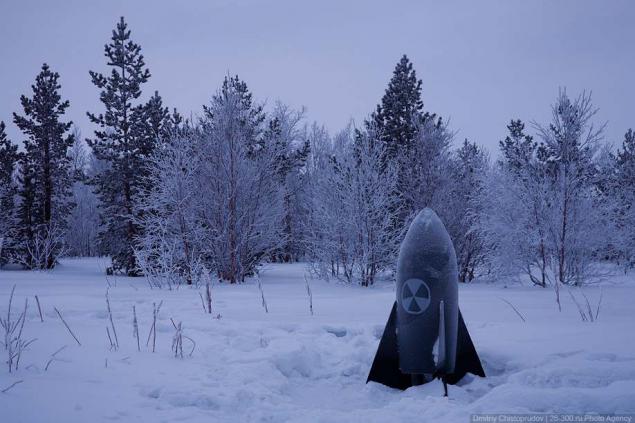
31. View from Abram-cape.
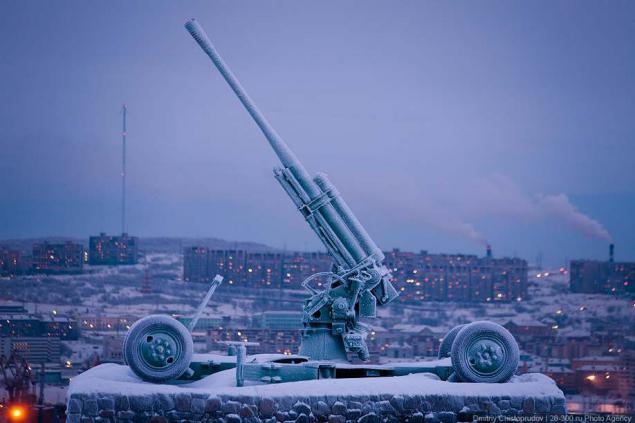
32.
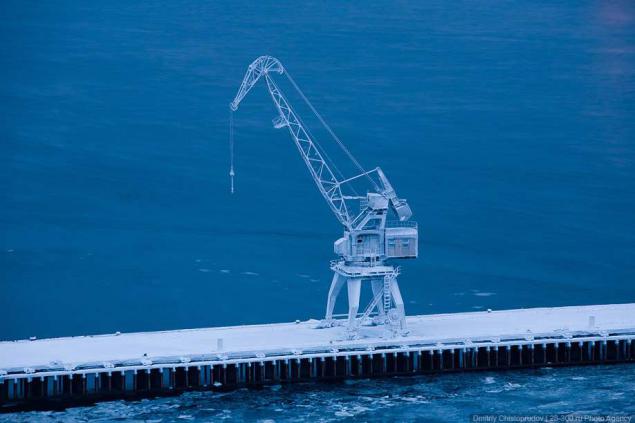
33
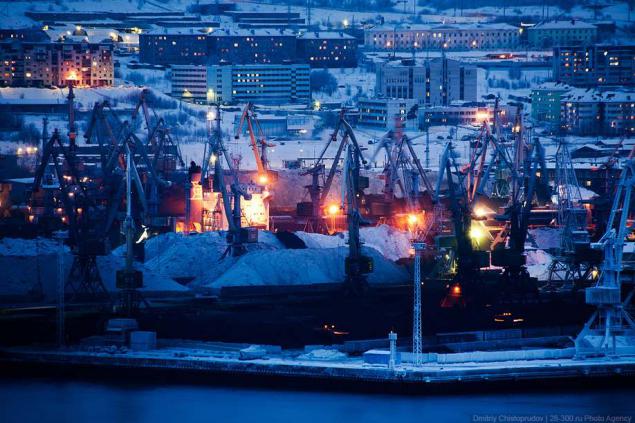
34. Next to the marina is put on eternal parking atomic icebreaker "Lenin".
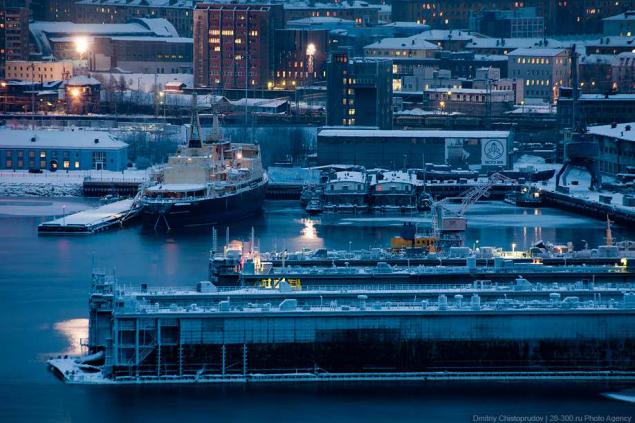
35
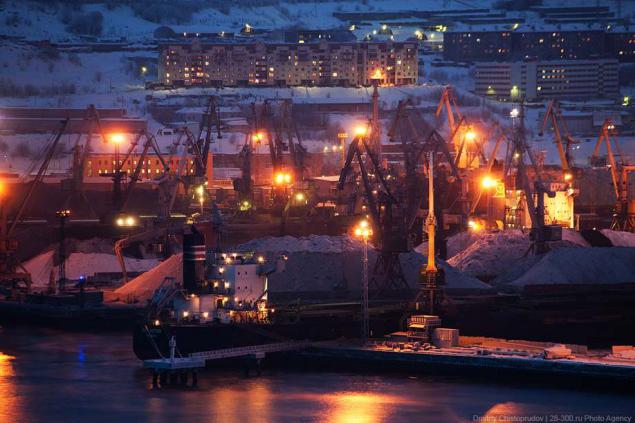
36
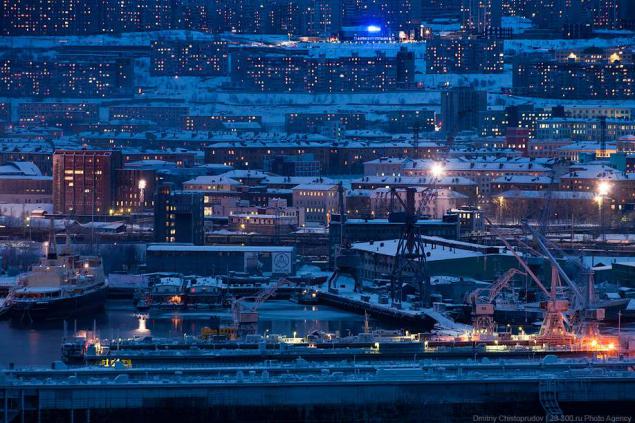
37
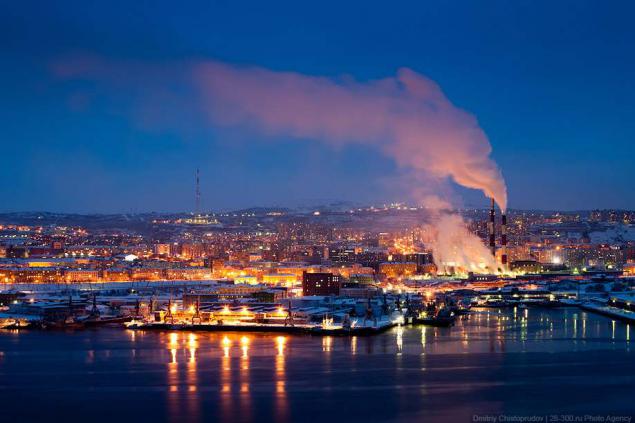
38. Panorama evening Murmansk.

39. Murmansk sea trading port and the memorial "Alyosha."
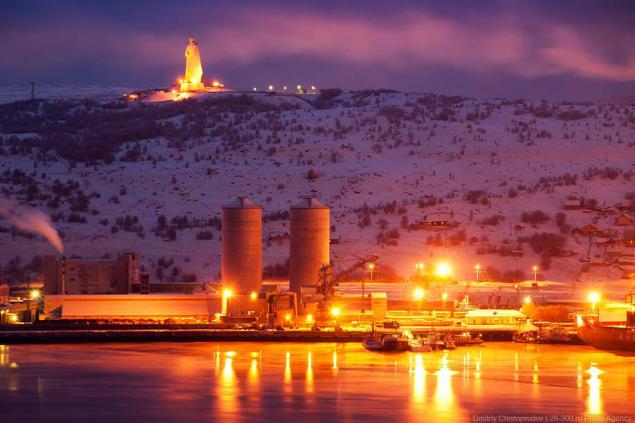
40.
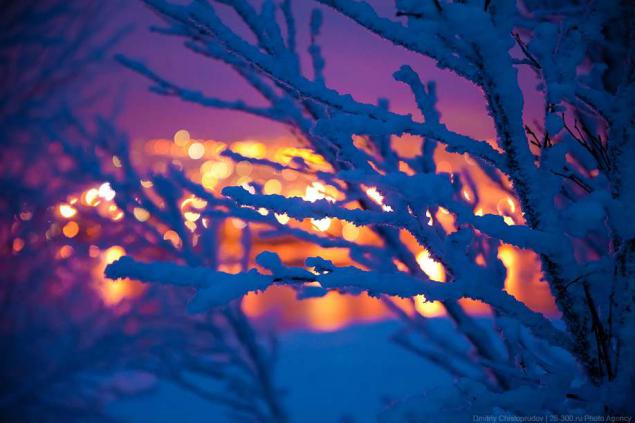
41. By the way, about the weather. Unlike many northern cities, in Murmansk there are abnormally high winter temperatures. Because of the proximity of warm air mass carried by the Gulf Stream, the average temperature in January and February about -10 -12 ° C.

42. The polar night at the latitude of Murmansk lasts from December 2 to January 11, the polar day - from 22 May to 22 July.
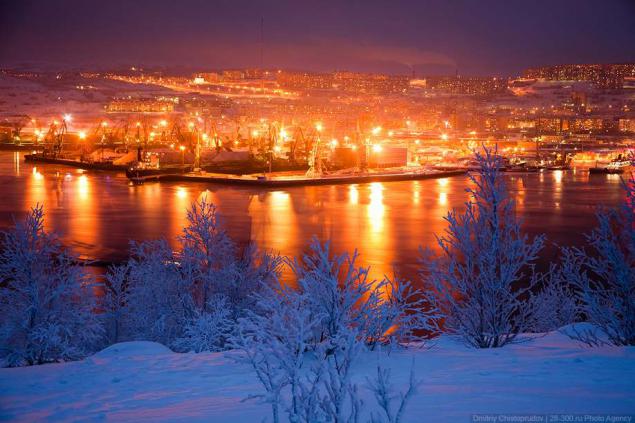
43. Chetyrёhpolosny road bridge across the Kola Bay is one of the longest in Russia and the longest road bridge above the Arctic Circle.
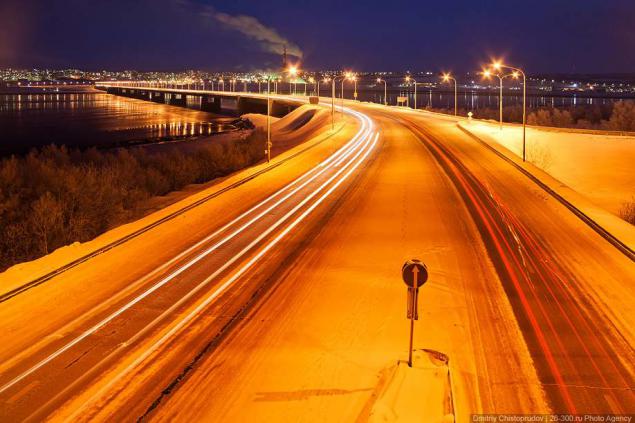
44. The bridge has become a motor assembly, providing automotive connection with the western regions of Murmansk Murmansk region, as well as with Norway and Finland.
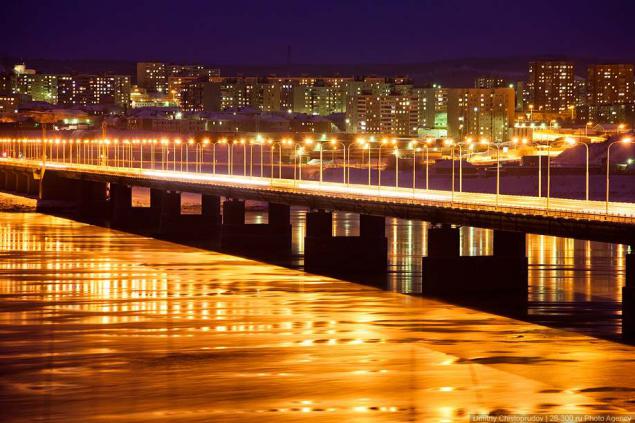
45.
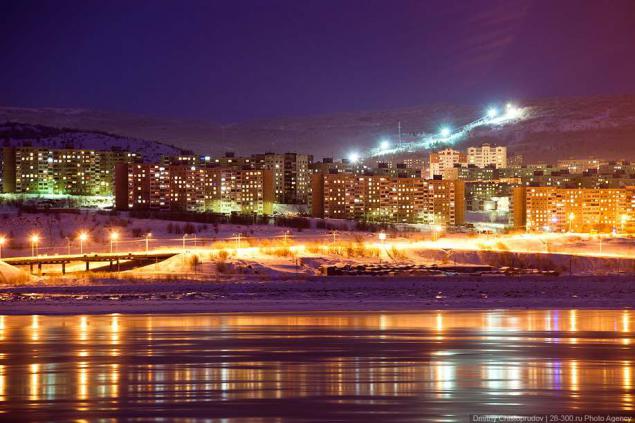
46. Naval Station.

47. The nuclear-powered icebreaker "Lenin" - the world's first nuclear-powered surface vessel propulsion. The use of this icebreaker has significantly extend the life of navigation on the Northern Sea Route. The icebreaker "Lenin" has worked for 30 years and in 1989 it was decommissioned.
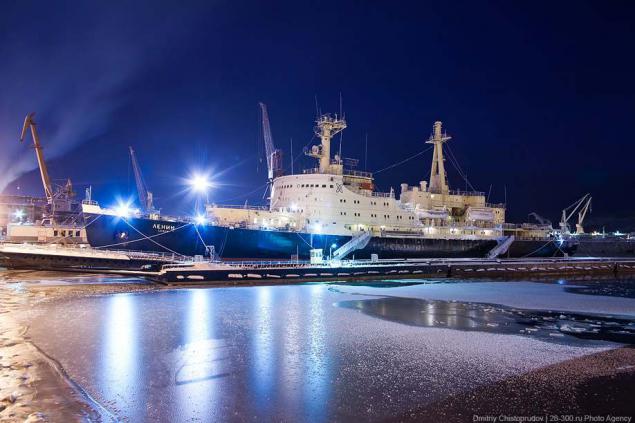
48.
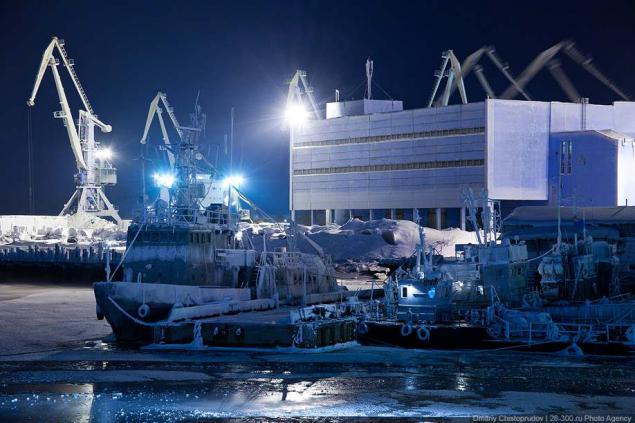
49.
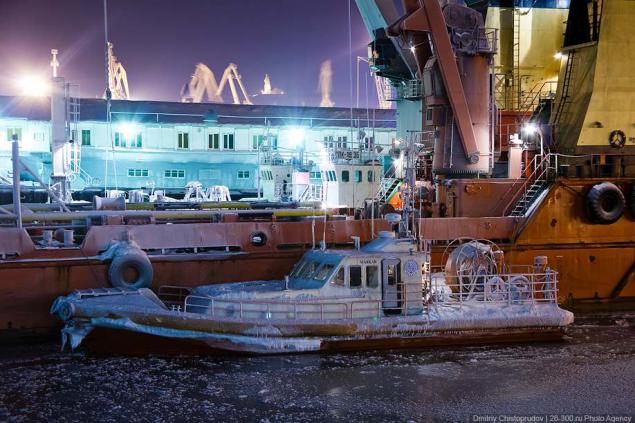
50. This is our three-day trip was over and we went to the train compartment car Murmansk-Moscow, to suffer "thermal sadism world's evil on wheels."

Source:

2. The first point was the shooting in the northern hill town overlooking the oil platform "Prirazlomnaya».
The town stretches more than 20 kilometers along the rocky eastern coast of the Kola Bay, and almost all of this over the coastline is a solid port.

3.

4. Fixed Offshore Platforms "Prirazlomnaya" - the world's first ice-resistant oil platform, designed to develop the Prirazlomnoye field in the Pechora Sea. The uniqueness of the platform is that it will work in Arctic conditions.

5. The total height of the platform - 141 meters, the length and width of 120 meters (the length of a football field), and weight - 110 tons.

6. The scale of the design can be evaluated by little men-bug.

7.

8. The heavy aircraft carrying cruiser, the only one in the Russian Navy in its class, "Admiral Kuznetsov". Prior to this cruiser called the "Soviet Union", "Riga", "Leonid Brezhnev" and "Tbilisi". Currently, the Russian ships of this class are not constructed.

9. On 5 September 2005 in the North Atlantic on this cruiser took two emergency landing Su-33. One of the fighters fell into the ocean and sank to a depth of 1,100 meters, the second stay on deck. The cause of both accidents was broken cable arresting gear (thick steel cable that serves to force stop planes). Sunken airplane planned to destroy the depth charges due to the presence of classified equipment, but it turned out that this is not possible. Command of the Navy hoped that the plane is destroyed himself.

10. Next, we went to the observation deck to the "Alyosha" - memorial complex "Defenders of the Soviet Arctic during the Great Patriotic War."

11. The complex was built on the hill Green Cape, which towers over the city and the Kola Bay on 173 meters. During the Great Patriotic War, Murmansk has repeatedly been attacked by land and air. Stationed in the Arctic 150,000th German army had Hitler's directive to capture the city and the port of Murmansk, through which were loads of allied countries for the supply of the country and the army. According to the calculations of the German command, Murmansk had to be taken in a few days.

12. Double-German troops undertook a general offensive on the Murmansk, however, both the offensive failed. After the city repulsed the offensive, the enemy attacked it from the air, dropping during the war, a total of 185,000 bombs and committing 792 flight.

13. According to the number and density inflicted on the city by Soviet bombing Murmansk city is second only to Stalingrad. The bombing destroyed three-quarters of the buildings.

14. Since the late 1980s on the dock in the northern part of the city, in close proximity to residential areas, based fuel ship "Lepse". During the construction of nuclear-powered icebreaker "Lenin" it became clear that for the normal operation of an icebreaker escort vessel must be specially equipped for the reception of radioactive waste and reactor cooling water circuits. "Lepse" conducted 14 operations for reloading of nuclear fuel to the nuclear icebreaker "Lenin", "Arctic" and "Siberia". Emergency spent nuclear fuel from the reactor icebreakers remains in its storage until now. Total on board, dating back to 1934, kept a total of 260 kg of uranium and 156 kg of fission products and fissile radionuclide 8 kg of plutonium. Disposal of this ship will cost about 40 million euros.

15. Murmansk port consists of three parts: the fishing port, commercial port and passenger. In recent years, the trend of displacement of all other commercial port due to increased exports of coal and other mineral resources for the reception and storage of Murmansk which has the necessary infrastructure. From constant unloading of coal, the city is gradually sinking into coal dust, and all the snow becomes gray as in the Siberian Prokopyevsk.

16. District Abram-cape.

17.

18. An important role in the city economy plays Oktyabrskaya Railway. Despite the development of road and sea transport most of the cargo transported by rail.

19.

20.

21.

22

23

24. The view from the bridge across the Kola Bay.

25

26.

27

28. It is evident that in the port of unloading coal ...

29.

30.

31. View from Abram-cape.

32.

33

34. Next to the marina is put on eternal parking atomic icebreaker "Lenin".

35

36

37

38. Panorama evening Murmansk.

39. Murmansk sea trading port and the memorial "Alyosha."

40.

41. By the way, about the weather. Unlike many northern cities, in Murmansk there are abnormally high winter temperatures. Because of the proximity of warm air mass carried by the Gulf Stream, the average temperature in January and February about -10 -12 ° C.

42. The polar night at the latitude of Murmansk lasts from December 2 to January 11, the polar day - from 22 May to 22 July.

43. Chetyrёhpolosny road bridge across the Kola Bay is one of the longest in Russia and the longest road bridge above the Arctic Circle.

44. The bridge has become a motor assembly, providing automotive connection with the western regions of Murmansk Murmansk region, as well as with Norway and Finland.

45.

46. Naval Station.

47. The nuclear-powered icebreaker "Lenin" - the world's first nuclear-powered surface vessel propulsion. The use of this icebreaker has significantly extend the life of navigation on the Northern Sea Route. The icebreaker "Lenin" has worked for 30 years and in 1989 it was decommissioned.

48.

49.

50. This is our three-day trip was over and we went to the train compartment car Murmansk-Moscow, to suffer "thermal sadism world's evil on wheels."

Source:
